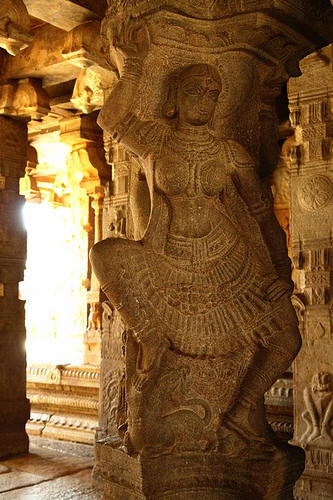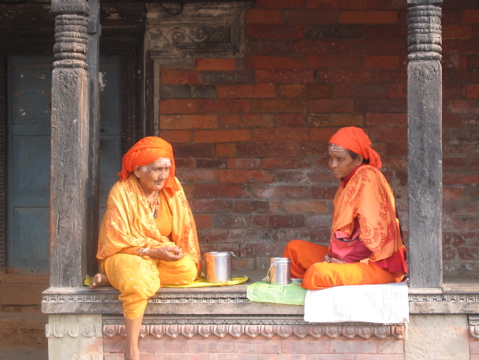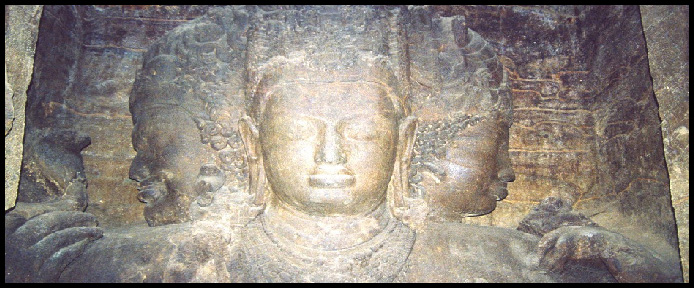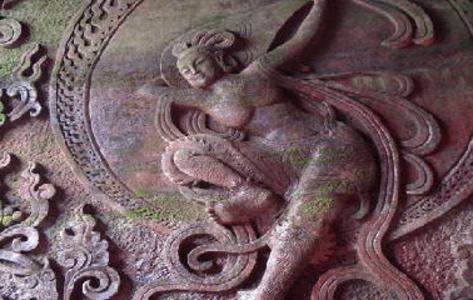Welcome to the
      Mystic Tiger AshramÂ
             Educational Programs...
A Spiritual Haven for All People and for All Times!Â
The Mystic Tiger Ashram learning Institute's basic class structure is to support programs involving spiritual as well as healing science majors at this juncture. We do not offer degree programs in the specific class studies listed below.
Majors of Study Provided are...
Doctorate of Divinity/Religion,Â
Spiritual Sciences and Healing Sciences - 3 years
Doctorate of Divinity in Stone Institute's unique Life-Coaching ProgramÂ
(Pre-requisite - Doctor of Divinity) - 1 year
Associate of Divinity/Religion,Â
Spiritual Sciences and Healing Sciences - 2 years
Mastery Yogic Training for those who wish to be trained by Swami Ramaraaja - Time period based upon individual adaptation and or proficiency.
Psychology & Depth Psychology
Psychology (lit. "study of the soul" or "study of the mind") is an academic and applied discipline which involves the scientific study of human (or animal) mental functions and behaviors. In this field, a professional practitioner or researcher is called a psychologist, and is classified as a social scientist. Psychologists attempt to understand the role of mental functions in individual and social behavior, while also exploring the underlying physiological and neurological processes.
Psychologists study such topics as perception, cognition, attention, emotion, motivation, personality, behavior and interpersonal relationships. Some, especially depth psychologists, also consider the unconscious mind In addition or opposition to employing empirical and deductive methods, psychologists sometimes rely upon symbolic interpretation and other inductive techniques.Â
Depth psychology is a broad term that refers to any psychological approach examining the depth (the subtle or unconscious parts) of human experience. It includes the study and interpretation of dreams, complexes, and archetypes, and it encompasses any psychology that works with the concept of an unconscious mind. Sigmund Freud's Psychoanalytic Theory objectifies the Id as the completely unconscious source of psychic energy derived from instinctual needs and drives.
Mythology
 Mythology can refer to either the study of myths or a body of myths. For example, comparative mythology is the study of connections between myths from different cultures, whereas Greek mythology is the body of myths from ancient Greece. The term "myth" is often used colloquially to refer to a false story; however, the academic use of the term generally does not refer to truth or falsity. In the study of folklore, a myth is a sacred narrative explaining how the world and humankind came to be in their present form. Many scholars in other fields use the term "myth" in somewhat different ways. In a very broad sense, the word can refer to any traditional story.
Peak Experience (Cosmic Conscious) and Mysticism
Psychologist Abraham Maslow theories will be explored. Mysticism is seeking communion with, identity with, or conscious awareness of an ultimate reality, divinity, spiritual truth, or God through direct experience, intuition, instinct or insight. Mysticism usually centers on a practice or practices intended to nurture those experiences or awareness. Mysticism may be dualistic, maintaining a distinction between the self and the divine, or may be nondualistic. Differing religious traditions have described this fundamental mystical experience in different ways:
Enlightenment or Illumination are generic English terms for the phenomenon, derived from the Latin illuminatio (applied to Christian prayer in the 15th century) and adopted in English translations of Buddhist texts, but used loosely to describe the state of mystical attainment regardless of faith.
Mystic traditions form sub-currents within larger religious traditions—such as Kabbalah within Judaism, Sufism within Islam, Vedanta and Kashmir Shaivism within Hinduism, Christian mysticism within Christianity—but are often treated skeptically and sometimes held separately, by more orthodox or mainstream groups within the given religion, due to the emphasis of the mystics on direct experience and living realization over doctrine. Mysticism is sometimes taken by skeptics or mainstream adherents as mere obfuscation, though mystics suggest they are offering clarity of a different order or kind. In fact, a basic premise of nearly every mystical path, regardless of religious affiliation, is that the experiences of divine consciousness, enlightenment and union with God that are made possible via mystical paths, are available to everyone who is willing to follow the practice of a given mystical system. Within a given mystical school, or path, it is much more likely for the mystical approach to be seen as a divine science, because of the direct, replicable elevation of consciousness the mystical approach can offer to anyone, regardless of previous spiritual or religious training.
The margin of reality is the threshold between potential and actual realities. These are the fundamental elements of the conscious and the unconscious minds. Potential reality becomes actual as consciousness breaches the margin of reality. In practice, depth psychology seeks to explore underlying motives as an approach to various mental disorders, with the belief that the uncovering of these motives is intrinsically healing. It seeks the deep layers underlying behavioral and cognitive processes. Archetypes are primordial elements of the Collective Unconscious in the psychology of Carl Gustav Jung. Archetypes form the unchanging context from which the contents of cyclic and sequent changes derive their meanings. Duration is the secret of action. The initial work and development of the theories and therapies by Sigmund Freud, Carl Jung, Alfred Adler and Otto Rank that came to be known as depth psychology have resulted in three perspectives in modern times.
Psychosocial & Cognitive Behavioral therapies
Cognitive behavioral therapy (or cognitive behavioral therapies or CBT) is a psychotherapeutic approach that aims to solve problems concerning dysfunctional emotions, behaviors and cognitions through a goal-oriented, systematic procedure. The title is used in diverse ways to designate behavior therapy, cognitive therapy, and to refer to therapy based upon a combination of basic behavioral and cognitive research.
Sociology
Sociology is both topically and methodologically a very broad discipline. Its traditional focuses have included social stratification (i.e., class relations), religion, secularization, modernity, culture and deviance, and its approaches.
Healing Sciences & Herbal Remedies
Vibrational Healing Therapy (Scalar Wave Technology), Reiki, Lightening Fire Touch Reiki, Alternative Healing, Prayer Healing, Shamanic Healing, Jin Sin Jitsu and more. Basic Knowledge in herbal remedies.
Intuitive Therapies, Psychic Sciences & Ethics
Many psychic science theories will be taught and explored: Clairvoyance, Clairaudience, Clairsentience, Clairgnosis, Empathic, Pre-cognition, Psychokinesis, Bi-location, Teleportation and other. Students will be trained to develop and master abilities in these areas.
World Religions
World Religions are by far the largest group, and these consist mainly of Christianity, Islam and Judaism (sometimes the Baha'i Faith is also included). They are named for the patriarch Abraham, and are unified by the practice of monotheism. Today, around 3.4 billion people are followers of Abrahamic religions and are spread widely around the world apart from the regions around South-East Asia. Several Abrahamic organizations are vigorous proselytizers.
.
Eastern Philosophies
Six branches of Indian religions that originated in Greater India and tend to share a number of key concepts, such as dharma and karma will be taught. They are of the most influence across the Indian subcontinent, East Asia, South East Asia, as well as isolated parts of Russia. The main Indian religions are Hinduism, Yogi philosophies, Buddhism, Sikhism, and Jainism. Indian religions mutually influenced each other. Sikhism was also influenced by the Abrahamic tradition of Sufism. Six branches of Yogi Philosophy will be explored in depth.
East Asian religions consist of several East Asian religions which make use of the concept of Tao (in Chinese) or Do (in Japanese or Korean), namely Taoism and Confucianism, both of which are asserted by some scholars to be non-religious in nature.
Meditation Training, Classes & Retreats
The science of meditation is taught without esoteric overtones. Stone Institute's powerful meditation training takes the mystery out of reaching transcendent states of consciousness. Meditation is Scientific not Esoteric. Students are given tools which with practice will expand their consciousness without mantras, uncomfortable postures, and needing a guru. Â Students will learn how to easily control their brain states combining very simple techniques discovered from years of research.Â
The type of meditations that are taught are Samaadhi NirvaaNa Yoga meditation (Sanskrit for Samaadhi (deepest meditation), NirvaaNa (liberation, cessation, vanishing, quieted), Yoga (union with the divine) or deep liberation union (Deep trance Meditation). This meditation has been developed by Yogi Ramaraaja Kumaarii, the teacher of the Mystic Tiger Ashram and lowers brain states to theta, deepest delta and beyond during just one session. This is not a guided meditation rather, you are given this state in initiation as you are able to receive it while you are at the Class in a meditation session.)
Other types of meditation taught are working and walking meditative states that help a student to live in a state of meditation without interruption and develop mastery over the mind.  The goal of meditation is to become a raja yoga master eventually (discipline of the mind), calm the mind, relax the body and live in greater degrees of happiness, peace and tranquility. When this type of meditation is participated in for just moments each day one is propelled into a world filled with spiritual ‘aha’ experiences, insights and spiritual ‘higher self’ or God directed guidance very quickly as this is the natural state of every human being. This is the state of 'praying without ceasing', spoken of in the Biblical text. By participation in this type of meditation, one connects with their most highest selves, to the universal connection or the divine itself. As one grows into this ’divine’ connection with self and Spirit one will experience Cosmic, God and Unity Consciousness which is the goal of all spiritual practice from all religious traditions.
States of mysticism may be reached by many and training is provided to understand what is being experienced. Meditation has many health benefits especially when deep meditative states can be reached by the student. It lowers heart rate and causes stress reduction by reducing cortisol in the body. The Mystic Tiger Ashram conducts weekly meetings with a reading from one of various earthly spiritual traditions, as we practice no particular religion, and participate in deep Samaadhi NirvaaNa Yoga meditation.
Celtic, Druid, Wiccan and Pagan Traditions
Celtic religion covers the Druids and Wiccan Religions. Celtic polytheism, sometimes known as Celtic paganism, refers to the religious beliefs and practices of the ancient Celtic peoples of Western Europe prior to Christianization. Celtic polytheism was animistic, believing in spirits existing in natural objects such as trees and rocks. Religious beliefs and practices of the Celts varied throughout the different Celtic lands, which included Ireland, Great Britain, Celtiberia, Gaul, areas along the Danube river, and Galatia; however there were commonalities shared by all.
Wicca is a Neopagan religion and a form of modern witchcraft. It is often referred to as Witchcraft or the Craft by its adherents, who are known as Wiccans or Witches. Its disputed origins lie in England in the early 20th century, though it was first popularized during the 1950s by Gerald Gardner, a retired British civil servant, who at the time called it the "witch cult" and "witchcraft", and its adherents "the Wica". From the 1960s the name of the religion was normalized to "Wicca".
Copyright 2010 Mystic Tiger Ashram/Sharon R. StoneÂ
All Rights Reserved. No part of this site in whole or in part may be copied.without written permission of the administrator.Â
 | ||||
"By 1997 Swami Stone had began to combine the most logical and fail safe spiritual and psychological teachings that she had been mastering throughout her life and created the 'Steps to Personal Power and Transformation' that were influenced by western psychology, Jesus and Buddhist based logic and teachings. Buddhism philosophy in the current day is having a great impact upon the system of psychology and has been profoundly instrumental in..."
see Founder biography for more.
Wicca Continued...
Wicca is typically a duotheistic religion, worshipping a Goddess and a God, who are traditionally viewed as the Triple Goddess and Horned God. There are various different denominations within Witchcraft, which are referred to as traditions. Some, such as Gardnerian and Alexandrian Wicca, follow in the initiatory lineage of Gardner; these are often collectively termed British Traditional Wicca, and many of their practitioners consider the term "Wicca" to apply only to these lineaged traditions. Others, such as Cochrane's Craft, Feri and the Dianic tradition, take primary influence from other figures and may not insist on any initiatory lineage. Some of these do not use the term "Wicca" at all, instead preferring to be referred to only as "Witchcraft", while others believe that all traditions can be considered "Wiccan".
Native & Shamanic Traditions
African diasporic religions practiced in the Americas, imported as a result of the Atlantic slave trade of the 16th to 18th centuries, building of traditional religions of Central and West Africa.
Shamanism
comprises a range of beliefs and practices concerned with communication with the spiritual world. It is a prominent term in anthropological research. A practitioner of shamanism is known as a shaman, pronounced, (|ˈshämÉ™n; ˈshÄ?-|) noun (pl. -man(s)). There are many variations of shamanism throughout the world, but several common beliefs are shared by all forms of shamanism. Shamans are intermediaries or messengers between the natural world and spirit worlds. They can treat ailments/illness by mending the soul. Alleviating traumas affecting the soul/spirit enables the physical body to undergo balance and wholeness. The shaman is capable of entering supernatural realms or dimensions in order to obtain answers to the problems of their community. The shaman is physically present in the natural world, but at the same time enters into another dimension—enabling for the travel of the soul. The shaman has many travels in this other dimension. Some travels may be to bring guidance to misguided souls, to separate evil spirits from the human souls, or to alleviate the soul of all elements enacting upon it to cause the illness. The shaman only affects the spiritual world, which in turn affects the natural world. The result is that the shaman has brought balance to a soul and this will result in creating balance for the soul. The creation of balance results in the elimination of the ailment, thus restored health for the human body.
Reference Materials on this page were taken from Stone Institute training materials, Britannica, Merriam Webster and Wikipedia Sources for referencing basic definitions only and may or may not be used for curriculum data when attending actual classes. Definitions are being used for the purpose of this page in the website only for a basic understanding of possible curriculum subject matter.
 | ||||||
The Spiritual Haven for Healing, Self-Realization and Education






